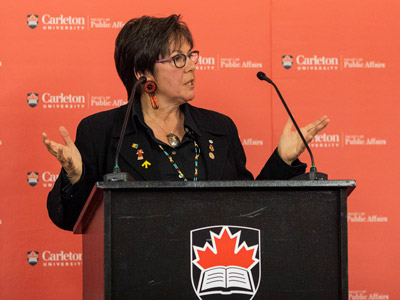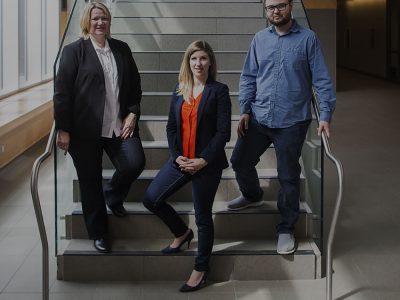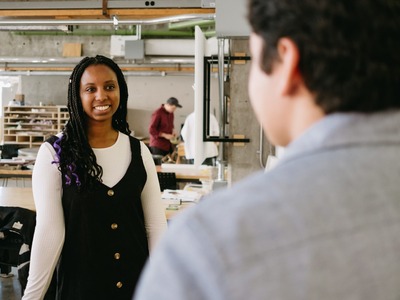By Leah Coppella
Photos by Fangliang Xu
Every wonder how books are made? On Nov. 19, MacODrum Library’s Book Arts Lab hosted a hands-on experience, demonstrating everything from printing, bookbinding and papermaking to printmaking, calligraphy and the history of the book.
Patti Harper, head of research support services, has been at the forefront of creating the lab, a collaboration of the book arts community across Canada and alumni, staff and faculty.
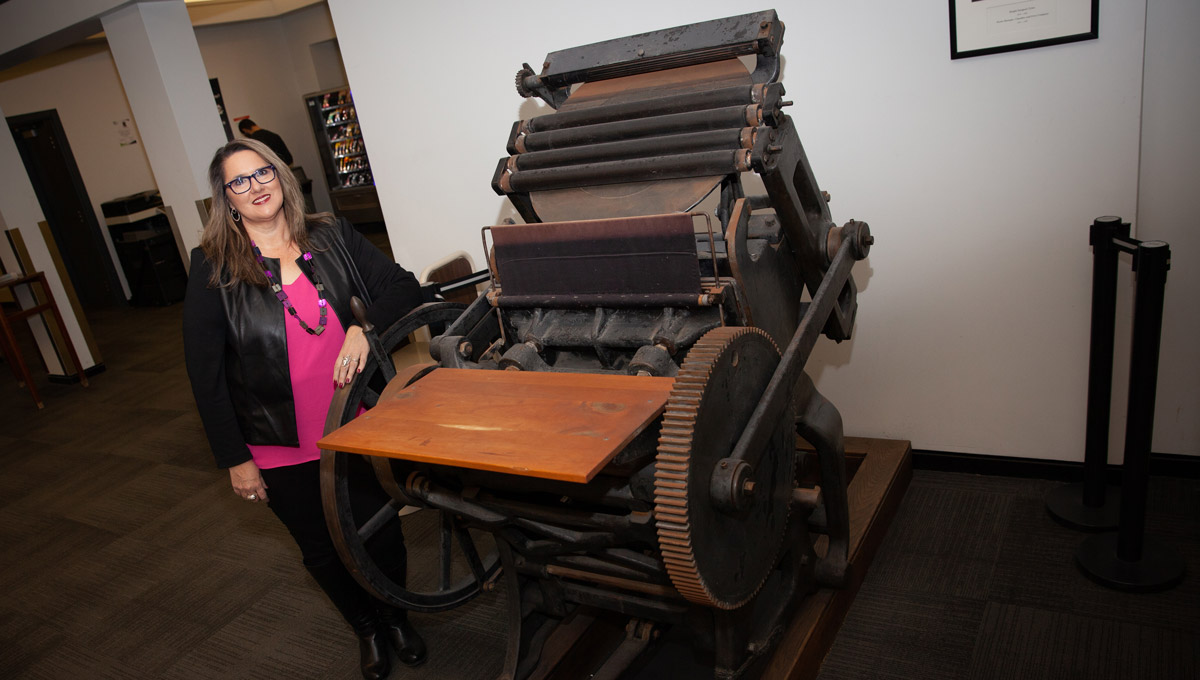
Patti Harper
“What makes this lab unique is that it’s built around experiential learning,” Harper says. “It absolutely relies on faculty to build it into their methodology.”
The inspiration for the lab came from a Chandler & Price Platen Press donated to the library back in 1988.
“We finally realized a few years ago how much could be possible with the printing press and how it could be built into instruction and teaching for faculty.”
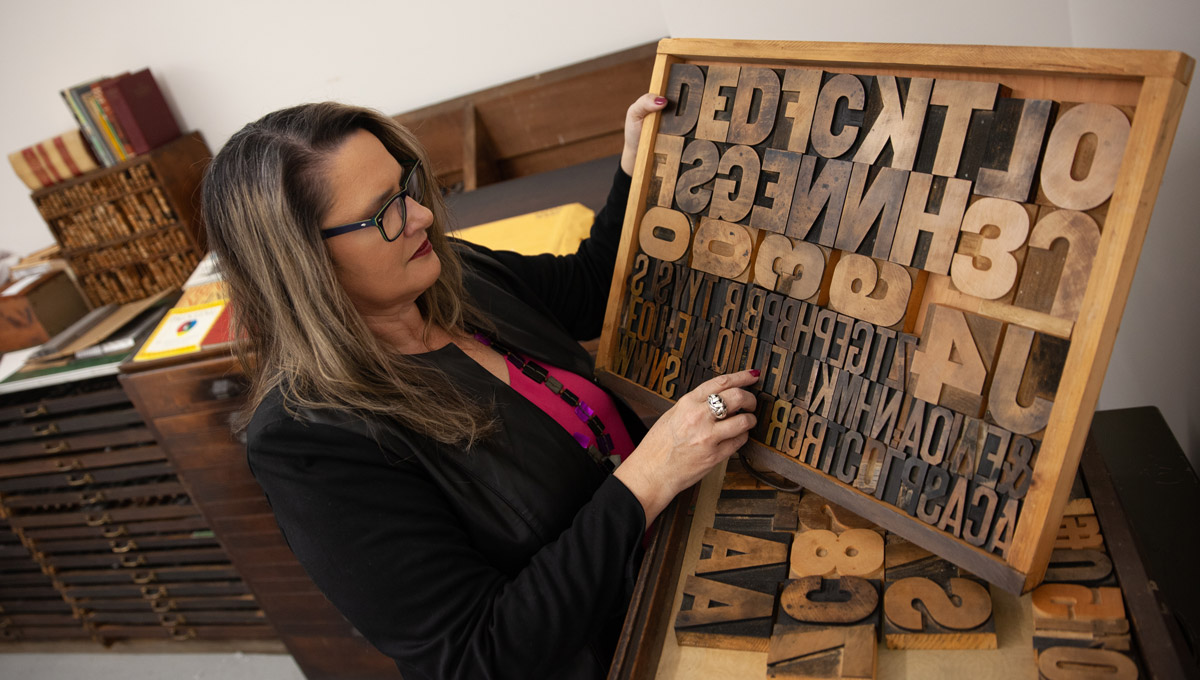
Book Arts Lab: Where Old Technology Meets Modern Pedagogy
The lab will feature two spaces. One provides seating and a screen for instruction and teaching; the other is a separate print room. Both spaces will be available for classroom use in winter 2020.
“Converging technology is when (the) old meets a new application,” Harper says. “So, the old technology of the printing press will meet a modern pedagogy with its place in the Book Arts Lab.”
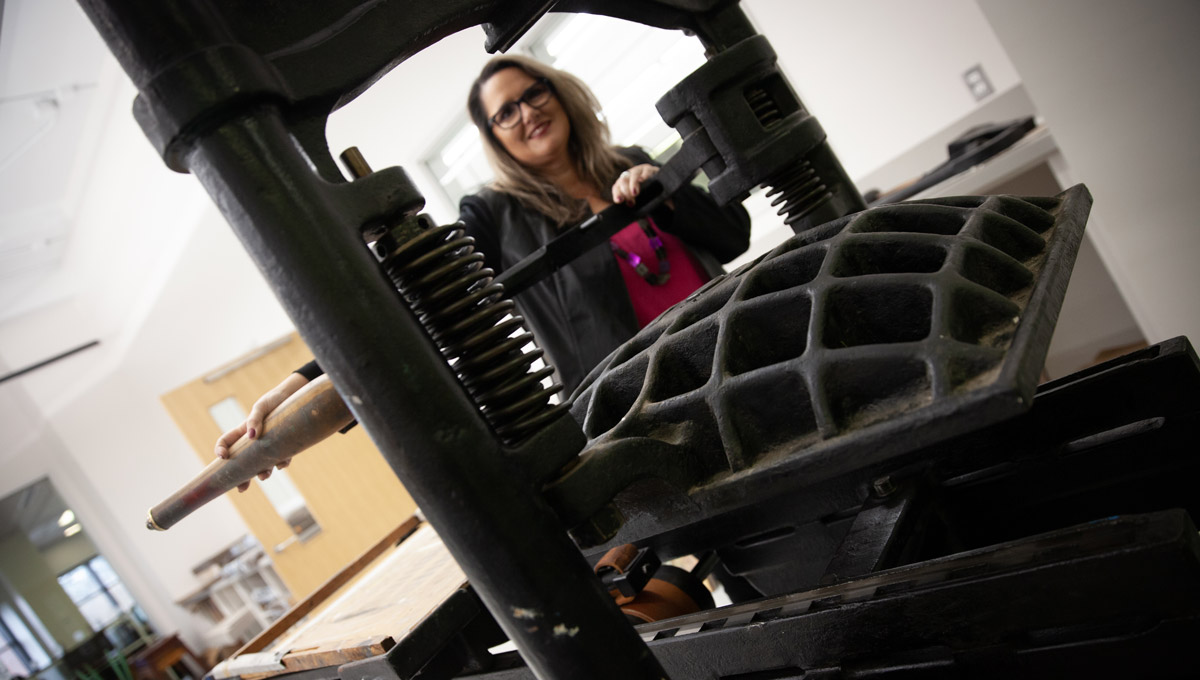
The lab will teach printing techniques from medieval times to the modern era. Thanks to the library’s rare books collection, people can also study books that are particularly unique.
Harper says the lab will be based on five pillars: typology, letter press printing, book binding, decorative paper techniques and illustrations, such as wood cuts.
Carleton professors from a range of departments such as Indigenous and Canadian Studies, Journalism and Communication, History, Industrial Design and English have shown interest.
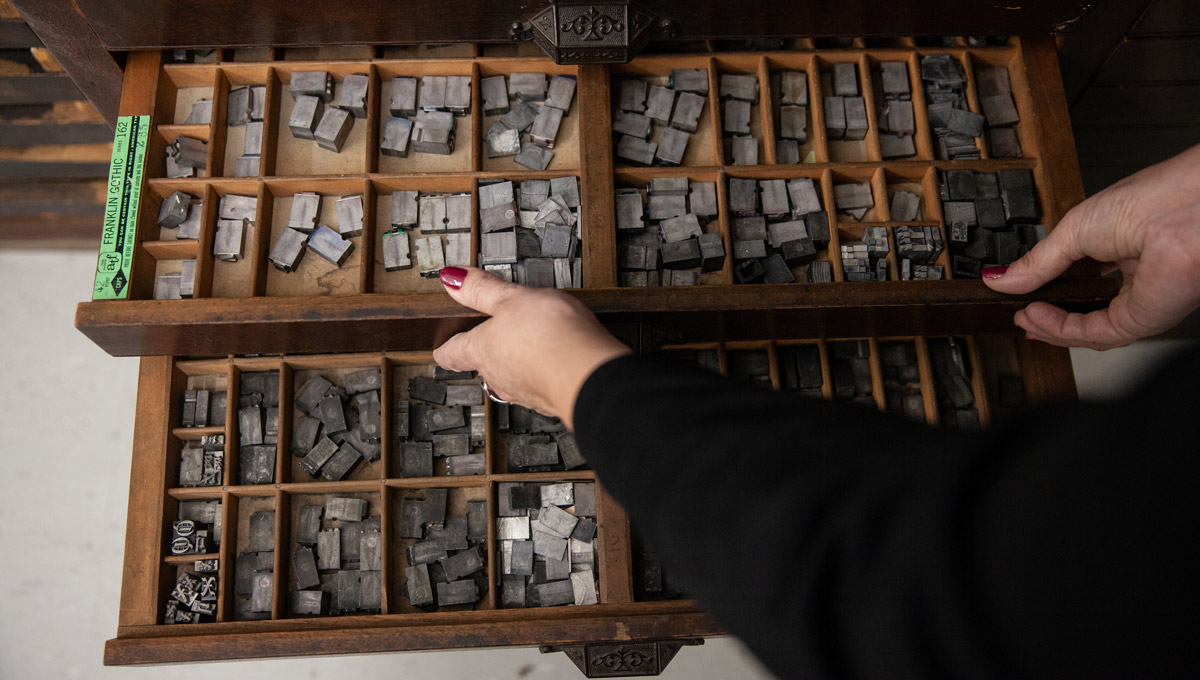
Building an Experience
About 75 faculty members attended an information session to learn how they can improve their teaching through the Book Arts Lab. An exciting course through the English Department on the production of literature is in the works for the winter term.
“Ultimately, we want to build an experience into faculty’s methodology.’’
The lab will be open on one side for use starting this fall and is continuing to look for sponsors for supplies such as ink and paper.
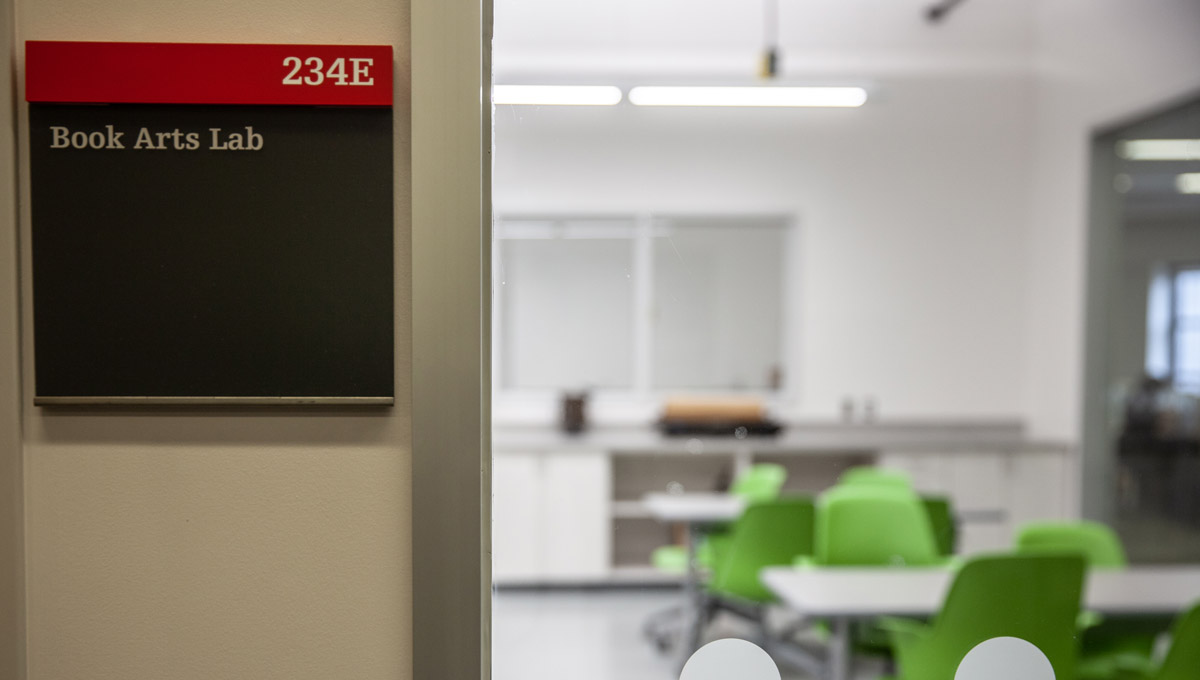
For the Books Arts Lab to reach its full potential, Harper says, it needs three things.
“It needs classroom instruction or the theory. It needs an experience using that knowledge, such as the printing press. And then it also needs reflection.”
Tuesday, November 12, 2019 in MacOdrum Library
Share: Twitter, Facebook

